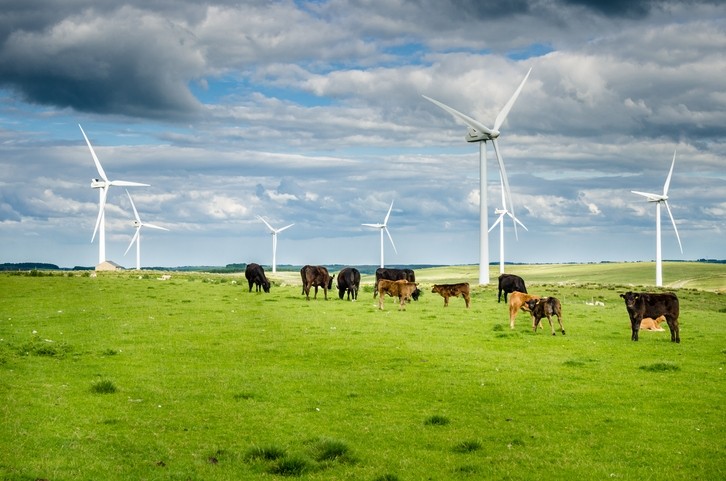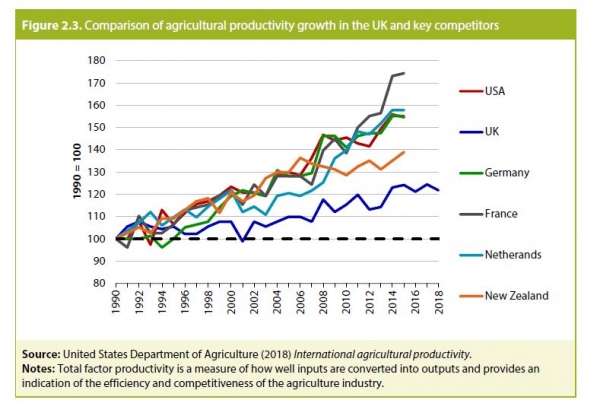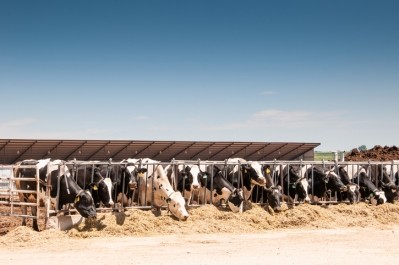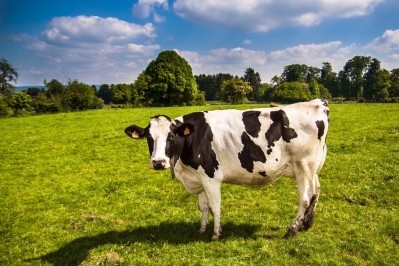GHG emissions: Report zones in on meat and dairy consumption

The publication, Land use: Policies for a Net Zero UK, assesses existing land usage in the UK and the changes required in order to deliver the UK government’s net zero greenhouse gas emissions (GHG) target by 2050: “Net zero requires a transformation in land use across the UK,” claims the CCC.
The NFU notes agriculture, as a whole, contributes 10% to the UK’s GHG emissions. This compares to transport, which contributes 27% and energy, which contributes 24%, it said, citing BEIS data.
The report acknowledges that emissions from UK beef is half that of the global average. However, it found that a reduction in the consumption of the most carbon-intensive foods - beef, lamb and dairy – by at least 20% per person in the UK and reducing food waste by 20% annually would save 7 Mt CO2e of on-farm emissions by 2050.
“These measures... can drive sufficient release of land to support the necessary changes in tree planting and bioenergy crops.
“Alongside expected population growth, they imply around a 10% reduction in cattle and sheep numbers by 2050 compared with 2017 levels. This compares with a reduction of around 20% in the past two decades.”
It said the government should implement low-cost, low-regret actions to encourage this shift such as the public sector taking a lead in providing plant-based options with all meals.
“An evidence-based strategy is required to establish which measures will successfully change behavior, encompassing information provision, skills support, and encouraging greater accountability of business through clear and robust metrics and mandatory reporting. If these are not enough, a second stage will need to look at stronger options, whether regulatory or pricing.”
Beyond the promotion of lower meat and dairy consumption and a reduction in food waste, the report also proposes other options to drive emissions reductions in England, Scotland, Wales and Northern Ireland including:
- Increasing tree planting – increasing UK forestry cover from 13% to at least 17% by 2050 by planting around 30,000 hectares (90 – 120 million trees) of broadleaf and conifer woodland each year.
- Encouraging low-carbon farming practices – such as ‘controlled-release’ fertilisers, improving livestock health and slurry acidification.
- Restoring peatlands – restoring at least 50% of upland peat and 25% of lowland peat.
- Encouraging bioenergy crops – expand the planting of UK energy crops to around 23,000 hectares each year.
The CCC report is published at a time of significant change, as the UK leaves the EU and the Common Agricultural Policy (CAP), and with new agriculture and environment bills being introduced at Westminster this month.
Turn down the volume on the debate, says UK feed sector
Jane Salter, head of environment, at UK feed trade group, the AIC, was keen to welcome and support the direction and intentions of the report. “We must however turn down the volume on the general debate that pitches farming against climate change, and look at the value of UK farming and land use in becoming more resilient to climate change.
“We understand, thanks to our joint work with the academics and CCC analysts that the recommendations are largely sound and balanced in concept if not in precise detail but that is industry’s role in getting the delivery right, against a supportive legislative backdrop”.
She said the AIC recognizes that feeding crops and feeding animals is one of the biggest contributing factors to farm GHG emissions and while the agri-supply industry, working with farmers, has lowered emissions of products and use by over 30% in the past 30 years there is still scope, and a significant need, to do more.
“The role of good advice on farm to drive this change cannot be underestimated”, said Salter, “and the network of 5,000 qualified trade and farm advisers, including AIC members, who are on farm day-in and day-out are well positioned to facilitate this ambition."
“It was clear from today that there is a huge opportunity to get the story straight”, she continued, “to recognize the value of the relative reliability of UK soils, production systems, welfare standards and environmental ambitions whilst challenging the industry as a whole to build on its strong foundations to provide a sustainable farming and food sector."
UK farming sector reacts
Reacting to the findings, Minette Batters, president of the National Farmers’ Union (NFU) in the UK, said a comprehensive approach across the whole UK economy is needed, and that, when it comes to farming, there must be a focus on the whole agricultural system.
Defra data for the UK, in 2018, shows total agriculture area was 19 million hectares (77% of total land area), 60% of which is used for livestock, 31% for crops, 5% for woodland with the remainder for buildings and other agricultural activities.
“In the NFU’s own plans for net zero agriculture, planting trees and hedgerows to increase carbon stores on farmland play a crucial part, alongside increasing productivity – producing more from less – to deliver low-carbon farming as well as boosting renewable energy and bioenergy production.”
She said, in reference to the diet changes proposed in the report, that plant-based products do not always necessarily have a lower impact on the environment.
“It all depends on where and how the ingredients have been produced, the environmental pressures involved in its production, the environmental management associated with that country’s agricultural system and the environmental resources available, as well as how far the product has traveled,” she argued.
Carbon store
The NFU lead said 65% of British land is only suitable for grazing livestock and the UK has the right climate to produce high quality red meat and dairy. Meanwhile, NFU director of policy, Andrew Clark, told the BBC that reducing the amount of land used for production in the UK would be counterproductive as grassland acts as a valuable store of carbon.
The CCC report flagged, however, that while livestock on non-organic grasslands can have a positive impact on soil quality, grassland cannot continuously increase its carbon store. “This means grassland cannot be used continually to offset ongoing methane emissions from livestock. Converting grassland to forest can increase the amount of carbon stored,” noted the publication.
UK farm productivity
Historically, UK farm productivity growth has lagged behind other developed countries and in recent years remained mostly flat, shows the CCC report. Most of the loss in competitiveness has occurred since the early 1990s, with the decline mainly on livestock farms, it said.
Speaking to BBC, Batters said British farmers are up for the challenge of producing food with less impact but the same amount.
Batters suggests the UK can also be far more ambitious when it comes to cutting food waste.
“The NFU believes the UK should be aiming for a 50% waste reduction throughout the whole food supply chain, which would also relieve pressure on people to make dietary changes.”









